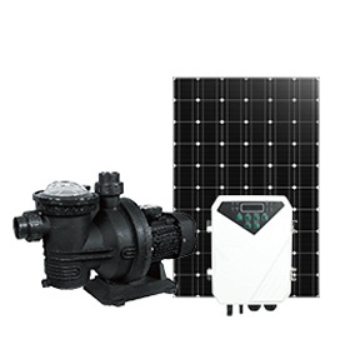A solar water pump system typically includes photovoltaic panels, a controller, a pump, and sometimes a battery bank. Keeping these components in good working condition is not only essential for continuous operation but also for maximizing the system’s output.
Daily and Weekly Maintenance Tasks
Inspect the Solar Panels
- Frequency: Daily inspection for any obvious damage or dirt accumulation, with cleaning as needed.
- Method: Use a non-abrasive cloth and, if required, a mild detergent to clean the solar panels. Ensure that there are no accumulated debris or bird droppings that might obstruct sunlight.
Monitor System Performance
- Frequency: Check the system’s output weekly to ensure it is operating within expected parameters.
- Method: Use the monitoring system provided with most solar pumps to check the power output. Look for any sudden drops in efficiency that could indicate a problem.
Monthly Maintenance Checklist
Clean the Solar Panels Thoroughly
- Frequency: At least once a month, more often in dusty or very dirty environments.
- Method: Gently wash the solar panels with soapy water and a soft brush to remove settled dust and grime that could reduce the panels’ efficiency.
Check Electrical Connections
- Frequency: Monthly check for any signs of wear, corrosion, or damage.
- Method: Tighten any loose connections. Clean any corrosion found on connections using a wire brush or appropriate cleaning solution. Ensure all wiring is insulated and secured against environmental damage.
Quarterly and Bi-Annual Maintenance Tasks
Inspect and Clean the Water Intake, Filters, and Pump
- Frequency: Every three to six months depending on usage and water quality.
- Method: Clear the intake and filters of any debris or sediment. This helps to maintain water flow and prevents damage to the pump. Check the pump for any signs of wear or damage and replace parts as necessary.

- Frequency: Bi-annually, test any backup systems such as battery banks or alternate power sources.
- Method: Ensure that batteries are charged and hold a charge and that all connections are clean and tight. Check that alternative power sources operate correctly when switched on.
Annual Comprehensive Evaluation
Professional Inspection
- Frequency: Once a year, have a professional service the system to ensure optimal performance.
- Method: A qualified technician should inspect the entire system, recalibrate sensors, check for potential issues, and make any necessary repairs.
Review System Design and Performance
- Frequency: Annually review the system’s performance to assess if any upgrades are necessary to handle new demands or to improve efficiency.
- Method: Compare current performance data with past records to identify any declining trends or efficiency issues. Consider upgrading panels or components if necessary.
Additional Tips
- Keep a Maintenance Log: Record all maintenance activities, including dates, tasks performed, and any repairs or replacements. This log will be invaluable for troubleshooting issues and planning future upgrades.
- Stay Informed: Keep up with new advances in solar technology and maintenance techniques. Occasionally, new products or methods can significantly enhance system performance.
Conclusion
Regular maintenance is key to ensuring that your solar water pump operates efficiently year after year. By following a structured maintenance schedule and addressing any issues promptly, you can maximize the return on your investment in solar technology. This not only saves you money on repairs and energy costs but also contributes to the sustainability of your water supply system.








